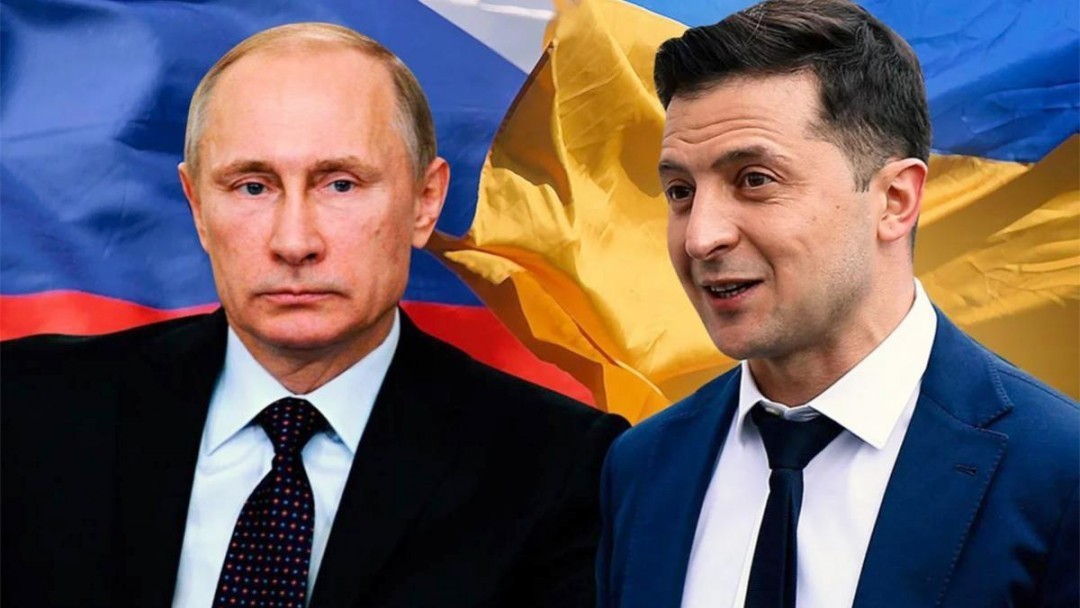
Since the war began one year ago, thousands have been killed, millions have been forced to flee their homes, cities have been reduced to rubble and there have been fears the invasion could lead to a war between Russia and NATO.
Below is a look at some of the main events since the invasion began (key highlights by Associated Press).
2022
FEBRUARY
On February 24, Russian President Vladimir Putin launches a “special military operation” in Ukraine from the north, east and south. He says the invasion is aimed at “demilitarisation” and “denazification” of the country to protect ethnic Russians, prevent Ukraine’s NATO membership and to keep it in Russia’s “sphere of influence.”
Ukraine and the West say it is an illegal act of aggression against a country with a democratically elected government and a Jewish president, Volodymyr Zelensky, whose relatives were killed in the Holocaust.
Russian troops quickly reach outskirts of Kyiv, the Ukrainian capital city, but their attempts to capture the capital and other cities in the northeast meet stiff resistance.
President Zelensky records a video outside his headquarters to show he is staying in Kyiv and remains in charge.
MARCH
On March 2, Russia gains control of the southern city of Kherson. In the few days that follow, Russian forces also seize the rest of the Kherson region and occupy a large part of the neighbouring Zaporizhzhia region, including Europe’s largest Nuclear Power Plant.
The Russian army soon gets stuck near Kyiv with its convoys stretching along highways leading to the Ukrainian capital becoming easy prey for Ukrainian artillery and drones.
On March 16, Russia strikes a theatre in the port city of Mariupol where civilians had been sheltering, killing hundreds of people in one of the war’s deadliest attacks.
On March 29, Russia announces the withdrawal of forces from Kyiv and other areas, saying it will focus on the eastern industrial heartland of the Donbas, where Russia-backed separatists have fought Ukrainian forces since 2014 following the annexation of Crimea.
APRIL
After Russia’s pullback from Kyiv, hundreds of bodies of civilians in mass graves or left in the streets of the town of Bucha are discovered, many of them bearing signs of torture in the war.
This discovery prompts world leaders to say Russia should be held accountable for possible war crimes.
On April 9, a Russian missile strike on a train station in the eastern city of Kramatorsk kills 52 civilians and injures over 100.
On April 13, the missile cruiser Moskva, the flagship of the Russian Black Sea Fleet, is hit by Ukrainian missiles and sinks the next day, damaging national pride, Associated Press reveals.
MAY
On May 16, Ukrainian defenders of the giant Azovstal steel mill, the last remaining Ukrainian stronghold in Mariupol, agree to surrender to Russian forces after an almost three-month siege. Mariupol’s fall cuts Ukraine off from the Azov coast and secures a land corridor from the Russian border to Crimea.
On May 18, Finland and Sweden submit their applications to join NATO in a major blow to Russia over the expansion of the military alliance.
JUNE
More Western weapons flow into Ukraine, including US-supplied HIMARS multiple rocket launchers.
On June 30, Russian troops pull back from Snake Island, located off the Black Sea port of Odesa, which was seized in the opening days of the invasion.
JULY
On July 22, Russia and Ukraine agree on a deal to unblock supplies of grain stuck in Ukraine’s Black Sea ports, ending a standoff that threatened global food security, following mediation by Turkey and the United Nations.
On July 29, a missile strike hits a prison in the Russia-controlled eastern town of Olenivka where Ukrainian soldiers captured in Mariupol were held, killing at least 53. Ukraine and Russia trade blame for the attack.
AUGUST
On August 9, powerful explosions strike an air base in Crimea. More blasts hit a power substation and ammunition depots there a week later, signalling the vulnerability of the Moscow-annexed Black Sea peninsula that Russia has used as a major supply hub for the war. Ukraine’s top military officer later acknowledges that the attacks on Crimea were launched by Kyiv’s forces, according to Associated Press.
On August 20, Darya Dugina, the daughter of Russian nationalist ideologist Alexander Dugin, dies in a car bomb explosion outside Moscow that the Russian authorities blame on Ukraine.
SEPTEMBER
On September 6, the Ukrainian forces launch a surprise counteroffensive in the northeastern Kharkiv region, quickly forcing Russia to pull back from broad areas held for months.
On September 21, Putin orders mobilisation of 300,000 reservists, an unpopular move that prompts hundreds of thousands of Russian men to flee to neighbouring countries to avoid recruitment. At the same time, Russia hastily stages illegal “referendums” in Ukraine’s Donetsk, Luhansk, Kherson and Zaporizhzhia regions on whether to become part of Russia. The votes are widely dismissed as a sham by Ukraine and the West.
On September 30, Russian president Putin signs documents to annex the four regions at a Kremlin ceremony.
OCTOBER
On October 8, an explosives-laden truck blows up on the bridge linking Crimea to Russia’s mainland in an attack that Putin blames on Ukraine. Russia responds with missile strikes on Ukraine’s power plants and other key infrastructure.
After the first wave of attacks on October 10, the barrage continues on a regular basis in the months that follow, resulting in blackouts and power rationing across the Ukraine.
NOVEMBER
On November 9, Russia announces a withdrawal from Kherson under a Ukrainian counteroffensive, abandoning the only regional centre it captured, in a humiliating retreat for the Kremlin.
DECEMBER
On December 5, the Russian military says Ukraine used drones to target two bases for long-range bombers deep inside Russian territory. Another strike takes place later in the month, underlining Ukraine’s readiness to up the ante and revealing gaps in Russian defences.
On December 21, Ukraine’s president Zelensky visits the United States on his first trip abroad since the war began, meeting with President Joe Biden to secure Patriot air defence missile systems and other weapons, and addressing Congress.
2023
JANUARY
On January 1, just moments into the New Year, scores of freshly mobilised Russian soldiers are killed by a Ukrainian missile strike in the city of Makiivka. Russia’s Defence Ministry says 89 troops were killed, while Ukrainian officials put the death toll in the hundreds.
After months of ferocious fighting, Russia declares the capture of the salt-mining town of Soledar on January 12, although Kyiv does not acknowledge it until days later. Moscow also presses its offensive to seize the Ukrainian stronghold of Bakhmut.
On January 14, when Russia launches another wave of strikes on Ukraine’s energy facilities, a Russian missile hits an apartment building in the city of Dnipro, killing 45 persons.
FEBRUARY
On February 20, US President Joe Biden makes a surprise visit to Kyiv where he meets with the Ukrainian president in a remarkable and defiant display of solidarity.
On February 23, the G7 Ambassadors present in Argentina, comprising Japan, Canada, the US, France, Italy, the United Kingdom and the European Union, write to affirm their support for the independence, territorial integrity and sovereignty of Ukraine within its internationally recognised borders.
In a statement that stressed the united resolve of the G7, they pledge to continue to provide Ukraine with financial, humanitarian, military, diplomatic and legal assistance and will maintain our strong solidarity with Ukraine for as long as needed.
They also “urge all countries that support democracy and the rule of law, such as Argentina, to demand that the Russian Federation cease this aggression, which is a flagrant violation of international law and universally recognised human rights.”





